Best Things to Do in Northwest Vietnam
If you're looking for mountains, culture, and adventure, the Northwest region of Vietnam should be at the top of your list. This part of the country is full of winding passes, rice terraces, ethnic villages, and dramatic landscapes that you won’t find anywhere else. Compared to other regions, it feels more remote and untouched. Traveling here takes effort, but it’s worth every moment.
In this guide, we’ll show you the best things to do in Northwest Vietnam for every province, from famous places like Lao Cai to hidden corners like Lai Chau. We’ll also share personal tips and honest opinions to help you plan your trip. Let’s jump right into it!
Overview of Northwest Vietnam
Northwest Vietnam is a mountainous region that borders Laos and China. It includes six provinces: Hoa Binh, Son La, Dien Bien, Lai Chau, Yen Bai, and Lao Cai. This region is known for its dramatic landscapes, ethnic diversity, and deep cultural roots. The terrain is rugged, with high peaks, deep valleys, terraced rice fields, and winding passes that offer stunning views.
If you enjoy adventure, nature, and local culture, this part of Vietnam has a lot to offer. You’ll find places like Sapa with its famous rice terraces, Mu Cang Chai with golden hills in harvest season, and remote areas like Sin Ho or Ngoc Chien where few tourists go. The region is also home to many ethnic groups like the Hmong, Thai, Dao, and Tay, each with their own language, dress, and traditions.
Traveling here takes more effort because the roads are long and the infrastructure is not as developed as in the cities. But in return, you get unique experiences that you can’t find anywhere else in Vietnam.
Best things to do in Northwest Vietnam for every province
Hoa Binh
Hoa Binh Province is about 70 km southwest of Hanoi. It's one of the first places you enter when traveling to the Northwest region. This province is home to the Muong people and offers a calm, green escape into the hills.
Hoa Binh Dam: The Hoa Binh Dam is one of the biggest hydroelectric dams in Southeast Asia. You can find it just outside Hoa Binh City. When you stand on top of the dam, you get wide views of the Da River and the lake behind it. There’s a viewpoint with a statue and a small monument, but to be honest, the real reason to come here is to see the scale of the dam and enjoy the views. You don’t need much time here, but it’s a good stop before going deeper into the province.
Da River Boat Trip: The Da River, also known as the Black River, flows through the region and forms a beautiful lake behind the dam. The boat takes you to quiet villages, temples like Thac Bo Temple, and fishing farms. It’s calm, peaceful, and a great way to enjoy nature without crowds. Bring snacks, sunscreen, and a hat because there’s not much shade on the boat.
Mai Chau is the most famous place in Hoa Binh Province. It’s about 140 km from Hanoi, and many travelers come here for a short break from the city. When you arrive, you’ll see a green valley filled with rice fields and traditional stilt houses. Most of them belong to the White Thai ethnic group. You can go biking around the valley, trekking to remote Thai villages, watching a traditional dance show at your homestay, and try local food like bamboo-tube rice (com lam), grilled meat, and banana flower salad.
Yen Bai
Yen Bai is located northwest of Hanoi and is one of the best places in Vietnam to see rice terraces. The province is still underrated, but if you enjoy nature, hiking, and peaceful countryside, you’ll love it here. Most travelers come for Mu Cang Chai, but there’s more to see if you have the time.
Mu Cang Chai sits at the foot of the Hoang Lien Son mountain range. It’s about 280 km from Hanoi and takes around 7–8 hours to get there by car or bus. This area is famous for its layered rice terraces carved into the hills by the Hmong people. During harvest season (late September to early October), the entire valley turns gold. It’s one of the most photogenic places in Vietnam.
On the way to Mu Cang Chai, you’ll pass through Nghia Lo and Tu Le. Nghia Lo is a small town surrounded by a large valley where the Thai people live. It’s not touristy, and the atmosphere is quiet. It’s also a good place for hot springs and small treks. We suggest stopping in Tu Le for a night if you don’t want to do the long trip to Mu Cang Chai in one day.
Thac Ba Lake is in the eastern part of Yen Bai Province, closer to Hanoi. It’s one of the largest artificial lakes in Vietnam, formed by a hydropower dam on the Chay River. The lake has over 1,300 islands and is great for boat trips, fishing, and nature stays. You can visit local Dao villages around the lake and even stay overnight in a stilt house.
Not many people know about Lam Thuong Valley, but we think it’s one of the most relaxing places in Yen Bai. It’s located in Luc Yen district, about 80 km from Yen Bai City. The valley is full of green rice fields, limestone cliffs, bamboo forests, and quiet Tay villages.
There are only a couple of homestays here, where you can enjoy local food, bike rides, and nature walks. If you like slow travel, Lam Thuong is a hidden gem.
Son La
Son La is a large province that borders Laos and lies west of Yen Bai. It has high mountains, deep valleys, and large ethnic minority communities. The most famous destination here is Moc Chau, but if you explore further, you’ll find waterfalls, hot springs, and historical sites.
Moc Chau is about 200 km from Hanoi and is one of the best short escapes in Northwest Vietnam. The climate is cool year-round, which makes it a good place to visit during the hot summer months.
Top places to see in Moc Chau:
Heart-shaped tea hills: These are perfect for sunrise photos and quiet walks. Local farmers may offer tea tastings.
Dai Yem Waterfall: It’s not huge, but it’s pretty, especially during the rainy season. There’s also a flower garden nearby.
Bach Long Glass Bridge: Opened recently, this is one of the longest glass bridges in the world. If you’re afraid of heights, be warned! But the view is impressive and worth the ticket price.
Na Ka Plum Valley: In March, the plum trees bloom with white flowers—great for photos.
Pine forest and Doi Cave: A bit more off the path, but very peaceful and nice for walks.
We recommend staying 1–2 nights in a local homestay or guesthouse. Try local milk products (Moc Chau is known for dairy), fresh strawberries (in season), and grilled food from street vendors.
Son La City and Son La Prison
Son La City is the provincial capital. It’s not very touristy, but if you’re passing through, you can visit Son La Prison, a French-built prison where many Vietnamese revolutionaries were held. There’s a small museum here that explains the history. It’s not very polished, but it’s an important site for those interested in Vietnam’s past.
Ngoc Chien Hot Spring
Ngoc Chien is located in Muong La District, north of Son La City. It’s a highland village known for its hot springs and wooden stilt houses. The springs are clean and not crowded. The locals believe the water has healing minerals. You can soak in the public pools or book a private bath at a homestay.
Son La Dam
Son La Dam is one of the largest dams in Southeast Asia. It’s located on the Da River, upstream from the Hoa Binh Dam. The area around the dam is peaceful and surrounded by hills and forests. You can take a boat trip on the lake or stop to take photos on the way to Muong La or Tua Chua.
Dien Bien
Dien Bien is Vietnam’s westernmost province, located near the border with Laos. It’s famous for the Dien Bien Phu Battle in 1954, where the Vietnamese defeated the French and ended colonial rule. But beyond the war history, Dien Bien has lakes, passes, and remote villages where you can see traditional life.
A1 Hill, Monument, and Victory Museum:
You can start your visit in Dien Bien Phu City. It’s small, but important. The key places here all relate to the war:
A1 Hill: This was a key French stronghold during the battle. You can still see bunkers and craters from the bombings.
Monument of Dien Bien Phu Victory: A large statue stands on top of D1 Hill. It overlooks the city and honors the soldiers who fought here.
Dien Bien Phu Victory Museum: The museum gives good background on the battle. Some displays are old-fashioned, but the dioramas and weapons are interesting. You’ll understand the scale of the fight and the importance of the victory.
About 20 km from the city, Pa Khoang Lake is a good place to relax. The lake is calm and surrounded by green hills. You can take a boat or walk along the shore. Some homestays nearby offer local food and basic accommodation. This isn’t a must-see, but if you want peace and a break from the road, it’s worth the stop.
Pha Din Pass connects Dien Bien and Son La. It’s one of the most impressive mountain passes in Vietnam, with sharp turns, high cliffs, and long views. There’s a viewpoint at the top where you can stop for photos. Drive carefully, especially in fog or rain, but the scenery makes it worth the challenge.
Dien Bien is home to many Thai people (White Thai and Black Thai) in their stilt houses and traditional clothes. You can also go deeper into the province to visit the westernmost point of Vietnam—A Pa Chai, where Vietnam, Laos, and China meet. Make sure to visit Milestone 0, the tri-border junction at the top of Khoan La San Mountain. You need a permit and a guide, but the experience is very special. Not many tourists make it this far.
Lai Chau
Lai Chau lies between Dien Bien and Lao Cai. It’s one of the least visited provinces in the country. The roads are winding and the distances are long, but the scenery is wild and beautiful. If you like adventure and want to avoid crowds, this is the place to go.
Sin Ho Plateau is located about 60 km from Lai Chau City. The road up there is steep, but once you arrive, you’ll see a quiet world of clouds, pine trees, and ethnic villages. The town itself is simple, but the views are wide and peaceful. You’ll meet Dao and Hmong people and see markets where they sell colorful handmade clothes.
Sin Ho is often called “the second Sapa” because it has the same mountain feel without tourism. If you like cold weather and authentic culture, this is a good place to stay a night.
Love Waterfall and O Quy Ho Pass
If you’re traveling from Lai Chau to Lao Cai, you’ll cross O Quy Ho Pass, one of the longest and highest passes in Vietnam. The road is dramatic and offers amazing photo stops. Right near the pass, you’ll find Love Waterfall. It’s a short walk through the forest, and the waterfall itself is tall and elegant. It’s not huge, but it’s beautiful and a good break from driving.
Pu Si Lung and Pu Ta Leng
Lai Chau has two of the highest peaks in Vietnam: Pu Si Lung and Pu Ta Leng. Both are taller than 3,000 meters. These treks are tough and require guides, camping gear, and good fitness. Pu Ta Leng is often called “the second Fansipan” and is covered with mossy forests and wild azaleas. If you’re an experienced hiker, this is a great challenge. But don’t go alone or unprepared.
Lao Cai
Lao Cai is the most popular province in the Northwest thanks to Sapa and Fansipan. It’s right on the border with China, and there’s a train from Hanoi that stops in Lao Cai City, the provincial capital. But most people head straight to the mountains, and for good reason.
Sapa
Sapa used to be a quiet hill station. Now it’s a busy tourist town, but it still has charm, especially if you leave the center. Things to do in Sapa:
Muong Hoa Valley: This valley has Hmong and Dao villages like Lao Chai, Ta Van, and Giang Ta Chai. You can enjoy a 2-day trek or take a ride on the Muong Hoa funicular and see the valley below.
Fansipan Cable Car: This is the highest peak in Vietnam (3,143 m). You can hike it (takes 2–3 days) or take the cable car from town. The summit is often in clouds, but on a clear day, the view is amazing.
Cat Cat and Ta Phin Villages: These are closer to Sapa town and easy to reach. Cat Cat is more touristy but still good for short walks. Ta Phin has Red Dao people and herbal baths.
Sapa gets crowded on weekends and holidays, so try to come midweek. Stay in a village instead of the town if you want peace.
Bac Ha
Bac Ha is about 100 km from Sapa. It’s quieter and known for its Sunday market, where local ethnic groups come to sell buffalo, corn wine, embroidery, and more. The people here include Flower Hmong, Tay, and Nung. The market is very lively and colorful and one of the best in Vietnam. There’s also some trekking in the hills around Bac Ha.
Hoang Lien National Park
Hoang Lien National Park covers a large area between Lao Cai and Lai Chau. It includes Fansipan and surrounding peaks. You can find rare plants, birds, and mountain animals here. Most people visit the park while trekking around Sapa, but there are deeper parts that few people enter.
When is the best time to visit Northwest Vietnam?
The best time to visit Northwest Vietnam is from September to November and March to May. These are the most pleasant months in terms of weather, scenery, and travel conditions.
September to November is the harvest season. This is when the rice terraces in places like Mu Cang Chai, Sapa, and Y Ty turn golden and look absolutely stunning. The weather is cool, the skies are clear, and the roads are dry. This is our favorite time to go, especially for trekking and photography.
March to May is springtime. The weather is mild, flowers are blooming in the hills, and it’s a good time for long motorbike trips or treks. This is also when peach and plum blossoms bloom in places like Moc Chau and Bac Ha, giving the mountains a soft pink and white look.
Avoid visiting during June to August if you can. This is the rainy season, with heavy downpours and occasional landslides in the mountains. Some remote areas may be hard to reach. However, this season brings out the lush green of the rice fields, especially in the early planting season (June), so if you don’t mind the rain, it’s still beautiful.
December to February is winter. It can get very cold, especially in Sapa, Sin Ho, and other high areas. Fog is common, and sometimes there’s frost or even snow on the peaks. The views aren’t as good, but if you enjoy a quiet and chilly atmosphere, it might be worth a visit. Just make sure to bring layers.
Conclusion
If you want to explore this region without the stress of planning every detail, we can help. Our local team offers customized tours across Northwest Vietnam, with knowledgeable guides and flexible itineraries to match your interests. Let us take you to the best things to do in Northwest Vietnam and show you the region the way we’ve come to love it. Contact us today to start planning your journey.
>>> Map of Dien Bien—A Timeless Land of History and Poetic Beauty
>>> How To Get From Sapa To Ha Giang
Send us your comments about : Best Things to Do in Northwest Vietnam
Required fields *
You might also be interested
Travel ideas
Need some inspiration? Discover some of the best tours in Vietnam, which are highly appreciated by our clients. An excellent starting point to help you choose the right trip to Vietnam, Laos, Cambodia, Burma or Thailand, whether you are traveling alone, as a couple, as a family or with friends.
And because this trip is yours, feel free to customize it as you wish!
Vietnam Cambodia Itinerary 14 Days
Hanoi – Hoa Binh – Mai Chau – Ninh Binh – Halong bay – Hue - Danang – Hoian – Saigon – Ben Tre - Can Tho – Saigon - Siem Reap Angkor - Tonlé Sap - Siem Reap – Ta Prohm - Departure
Vietnam 14 Day Itinerary
Vietnam 14-day itinerary covers the country’s top highlights and quintessential experiences for an unforgettable journey.
Honeymoon Tour Pakcages In Vietnam 12 Days
Saigon Arrival - City Tour – Mekong Delta – Danang – Hoian - by flight - Da Nang – Hanoi - by flight – Halong - overnight on junk – Departure
Authentic Hoang Su Phi Trekking Tours
Hoang Su Phi trekking tours take you to stunning terraces, meet few tourists, connect with locals and enjoy authentic culture.
Best Nha Trang Beach Tour 4 Days
Saigon/Hanoi – Nha Trang relaxation – Saigon/Hanoi – Departure
Mekong Delta Bike Tour Itinerary 7 Days
Cycle through the Mekong Delta in 7 days, discovering floating markets, orchards, craft villages, and tranquil green islands.
Are you interested in this tour?



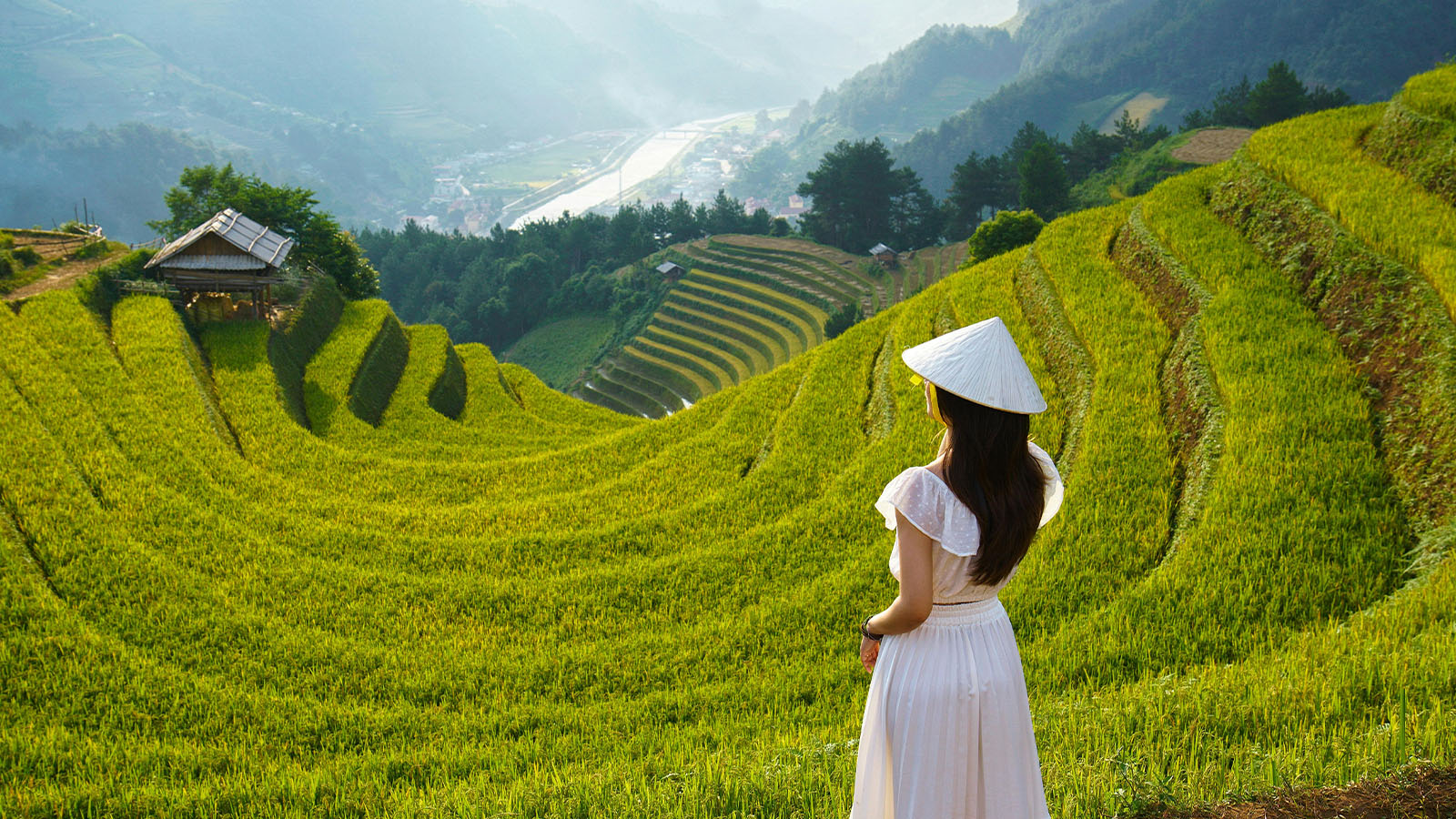





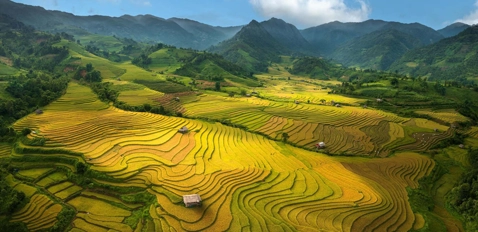





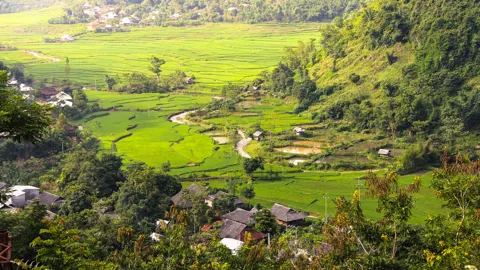
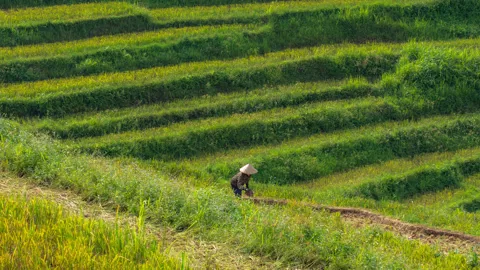


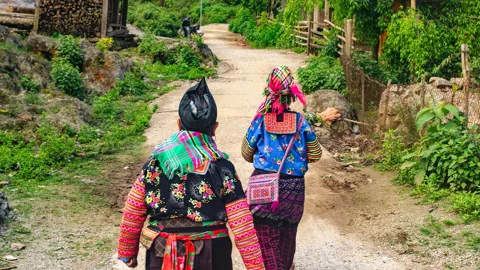
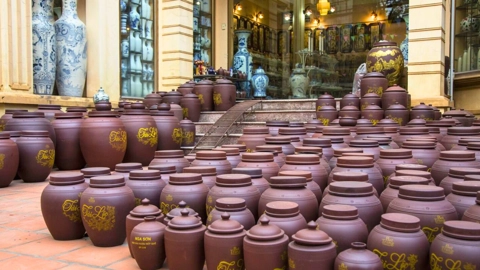
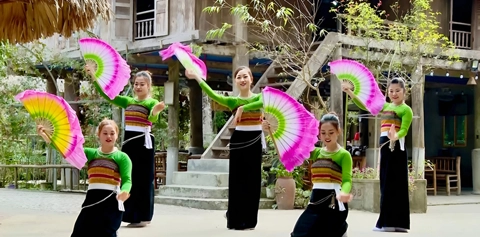
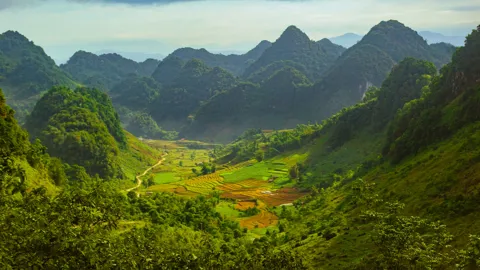















Comment